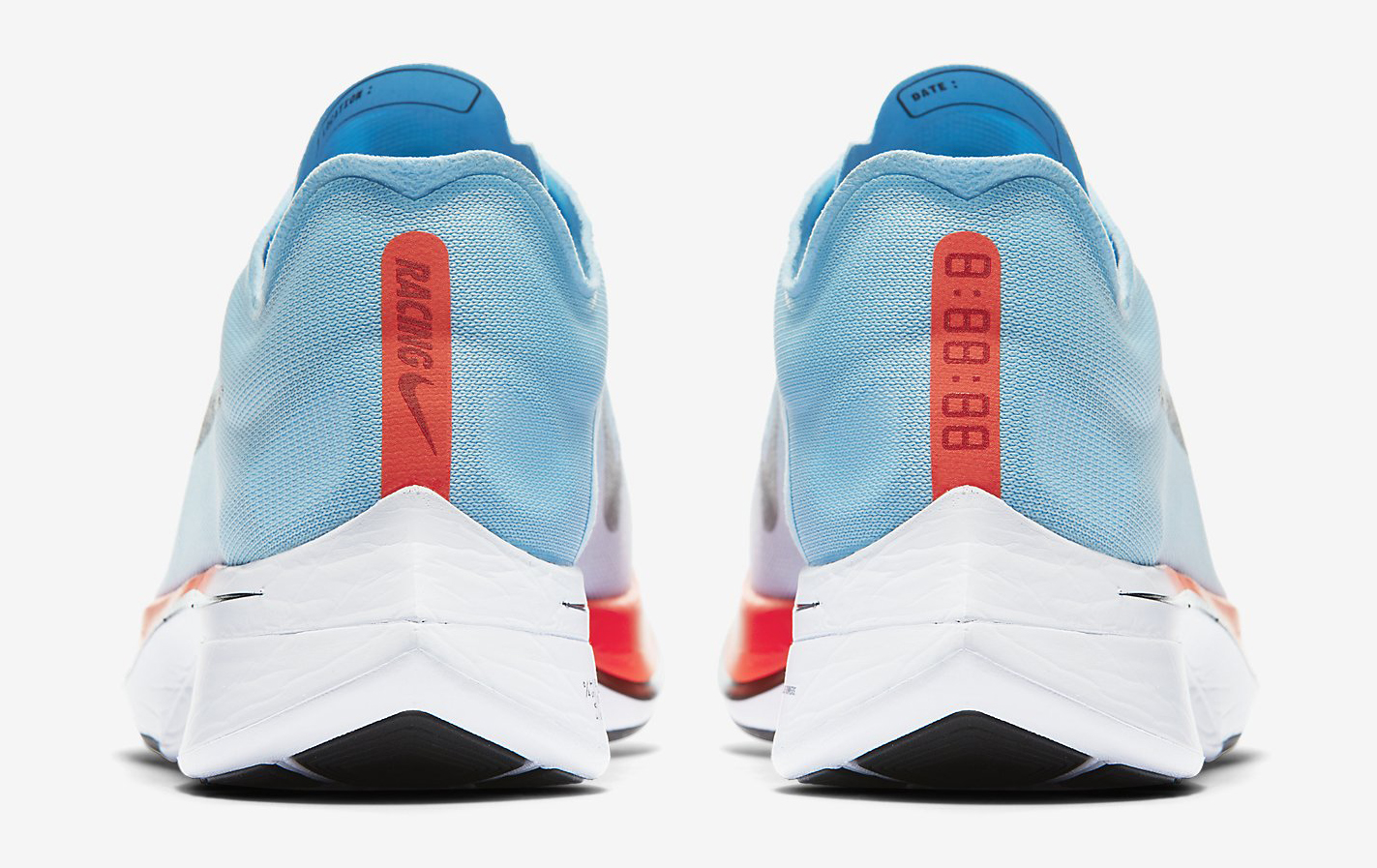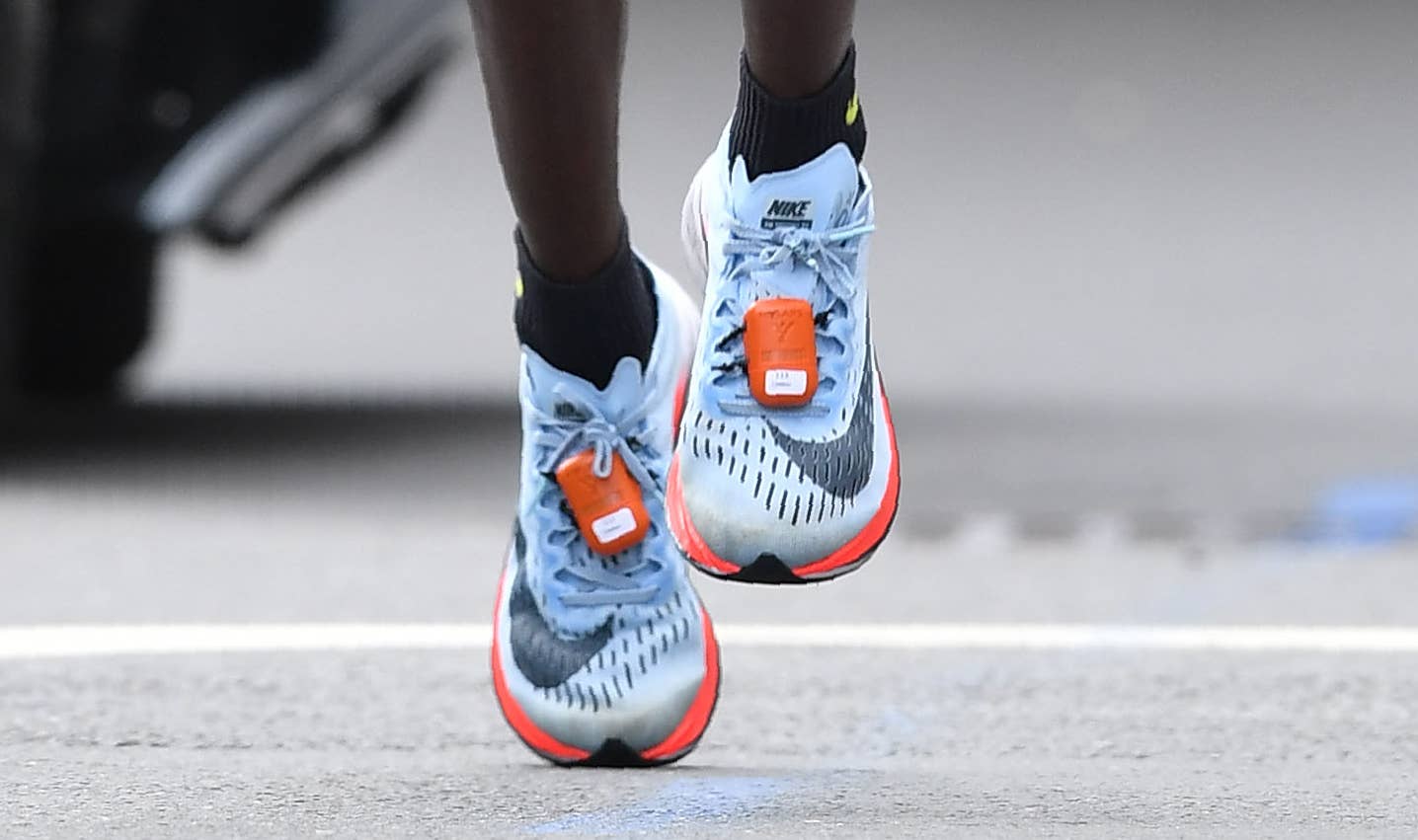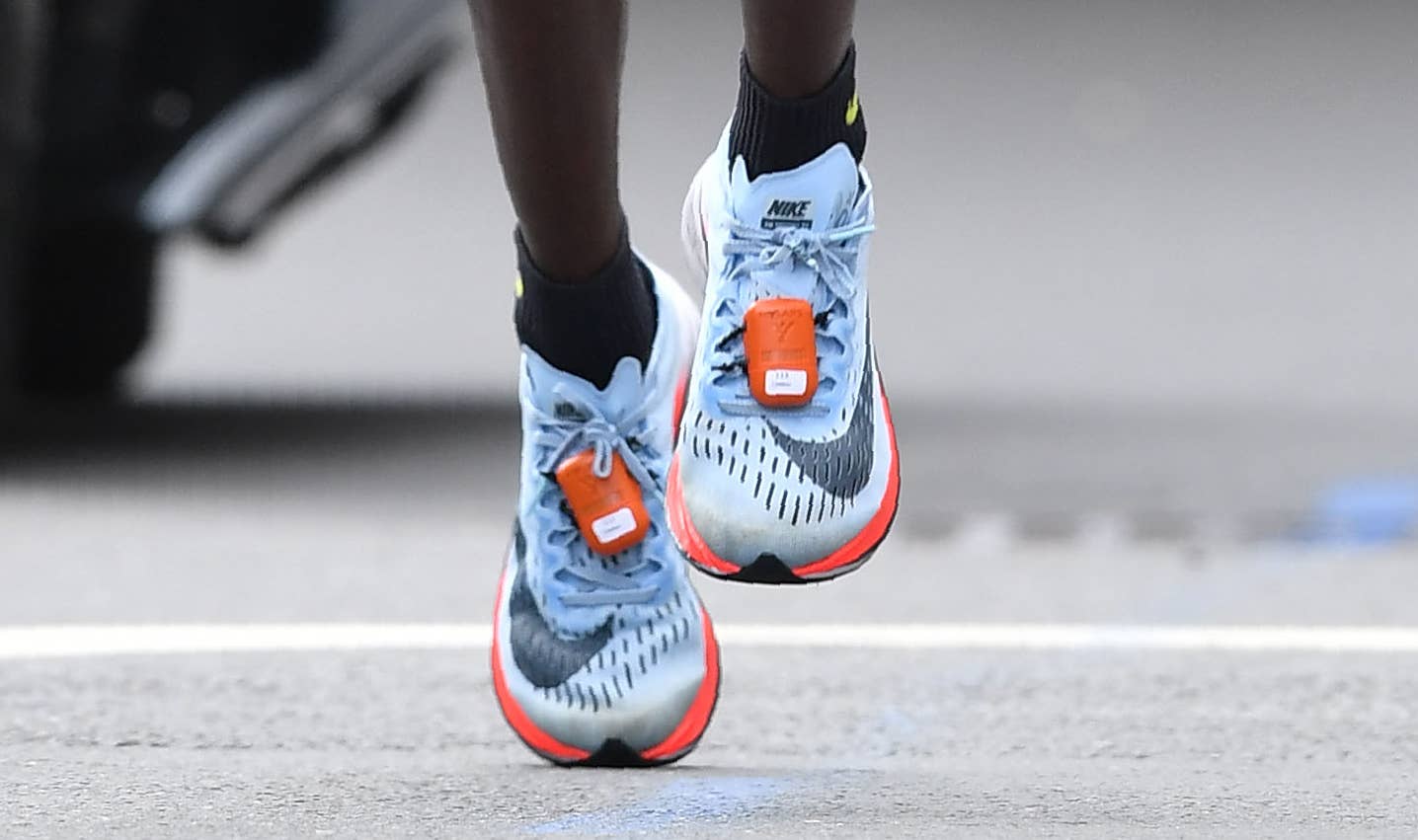
It was akin to putting a man on the moon, according to Nike. A "moonshot" is how the brand described Breaking2, its multiyear effort to have a runner record the world's first sub-two-hour marathon. Any steps forward for mankind would be made in sneakers, their wearer imprinting a Swoosh on the virgin surface of a new frontier. It was a failure and a success.
The failure: None of the three runners who participated in Nike's Breaking2 race in Italy in May completed the marathon in under two hours. The success: Eliud Kipchoge, the Kenyan who appeared at the onset to be the only member of the trio with a real chance to hit the sub-two mark, ran the fastest marathon ever recorded in two hours and 25 seconds. (His time is not an official world record, as some of Nike's perfectly crafted conditions for the race made it ineligible.) It was also successful as a marketing moment, with Nike building a significant buzz around the race via a livestream with slick production, celebrity appearances, and interstitials that explained the heroics of the occasion.
On a surface level, the marketing of the act of attempting a sub-two-hour marathon itself—and all the science, training, and technical wizardry involved—seemed to eclipse the usual goal of Nike marketing efforts: to sell shoes. The sneaker worn by the three runners, the Nike Zoom VaporFly Elite, was never to be sold at retail. Only around 100 pairs were produced, with some being available to the public via contests through Nike. The brand even joked about “running an ad for a shoe you can’t buy.” But consumers can buy something quite like it now, and even buy into a Nike program that will train them for their own personal marathon record.
These products and services rolled out in the wake of the race reveal Nike’s plan to trickle down Breaking2 for more pedestrian runners. The training program, called Project Moonshot (invoking the same astronautical vocabulary as May’s race in Italy), is a $262 course in New York City open only to those who’ve already been accepted to run a marathon. The sneaker is the Zoom VaporFly 4%, a $250 model featuring the much-touted new ZoomX foam that is part of Nike’s “cushioning revolution.”
This top-of-the-line model is part of a larger pack of Nike footwear wrapped up in the Breaking2 efforts. The Zoom VaporFly 4% was first unveiled in March, debuting on Nike’s news site alongside the actual VaporFly Elite race shoe and the Zoom Fly and Air Zoom Pegasus 34, two models that arrived at retail this summer. All four were united in colors of ice blue and bright crimson. While they are presented as a somewhat cohesive collection, each has different intents and purposes.
The least exciting of the group is the Air Zoom Pegasus 34 ($110), which released on June 8. That’s not to say that the model won’t be popular at retail, though. This is the thirty-fourth entry into the Nike Pegasus line for a reason. The “old reliable” of Nike’s running range returns here with Zoom Air cushioning in the forefoot and heel, although the bags up front don’t feel as snappy as they did on last year’s Pegasus 33. The shoe is also equipped with a Flymesh upper and Cushlon ST foam in the midsole.
A step up from that shoe is the Zoom Fly, also released on June 8, a model that makes use of a similar system and overall look as those found on the VaporFly Elite. While the Pegasus is not wholly unique in look or tech, the Zoom Fly is a departure from traditional Nike runners in both categories. First there’s the chunky build stemming from a 33-mm stack height that renders it taller and overall more present than a standard, low-to-the-ground racer. The platform goes against traditionally slim and quick runner looks, although the Swoosh placement on the upper and sculpted heel help it still appear sleek. Tech-wise, that insole mimics the VaporFly Elite race shoe by combining foam with an embedded plate—the Elite has ZoomX foam with a carbon fiber plate, while the Zoom Fly has a more economical combo of Lunarlon foam and a carbon-infused nylon plate. That’s right, this model does not have any actual “Zoom” technology in it, be it Nike’s traditional Zoom Air bag or its just-debuted ZoomX foam, despite being called the Zoom Fly. While Nike makes no attempts to claim that the tech is there where it isn’t (the brand’s gotten in trouble for this before), implying that through the name sets a bad precedent and comes off as somewhat deceptive.
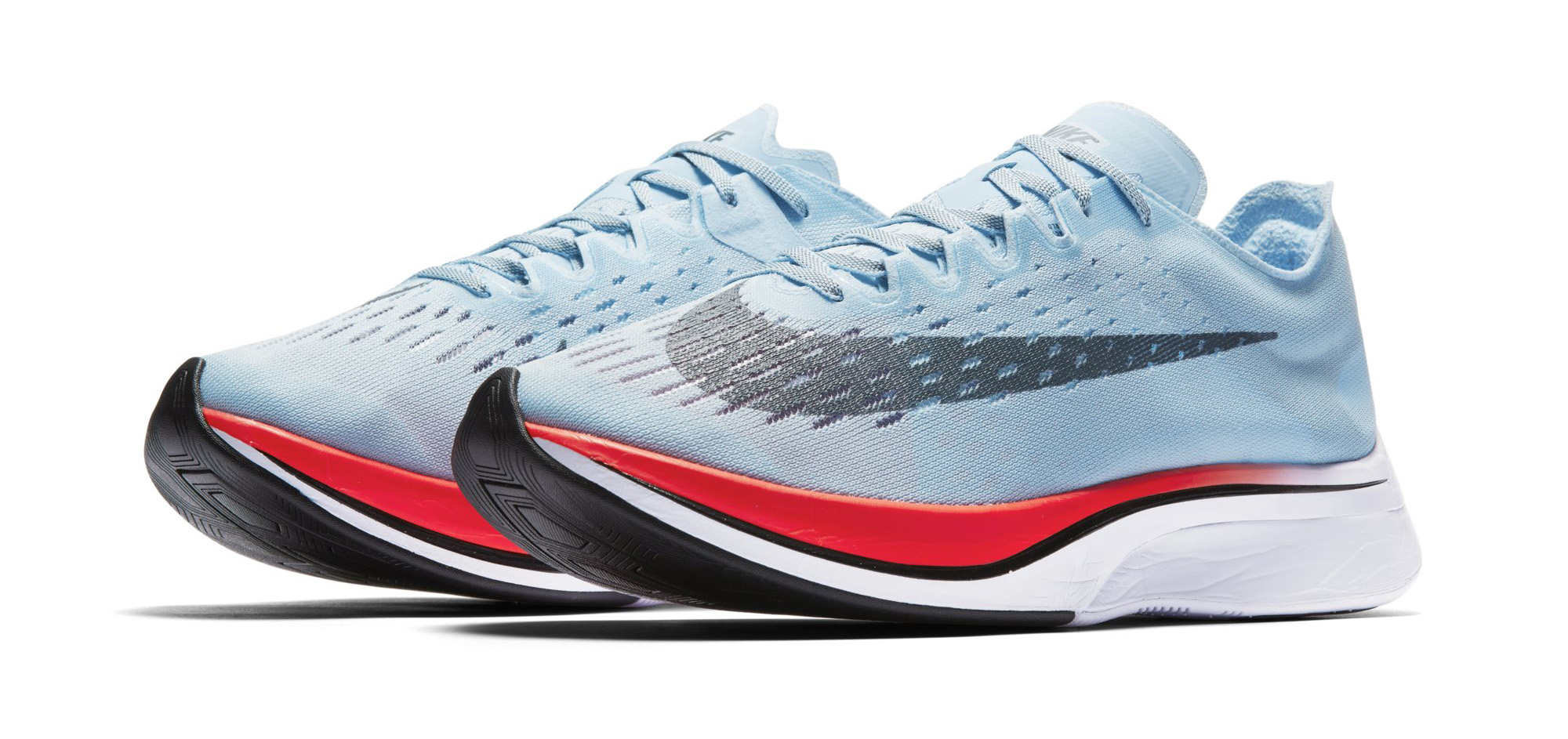
The pinnacle silhouette from the group is the Zoom VaporFly 4%, a shoe that was originally supposed to launch alongside the others but was delayed multiple times and eventually arrived in stores on July 20. While the shoe is visually very close to the Zoom Fly, a handful of key tech pieces set them apart. The Zoom VaporFly 4% is the closest thing to the actual Breaking2 race shoe that’s available to the public, and uses the same setup of ZoomX foam and a carbon fiber plate in its midsole. The main design difference is that the Elite sneakers used Flyknit uppers where the 4% doesn’t, and that the Elites were custom-made to the exact specifications of the three Breaking2 runners. The VaporFly 4% is lighter than the Zoom Fly: a size 10 pair of the VaporFly 4% weighs 6.5 oz, vs. a size 10 pair of the Zoom Fly at 8.5 oz. Where the Zoom Fly has Flywire supports, the VaporFly 4% uses an internal arch band for lockdown, a piece borrowed from the Zoom Streak 6. In general the VaporFly 4% is more deconstructed, and is designed for a different purpose. Nike’s proposal for these two similar models is that the Zoom Fly can be used for elevated paces and extensive training, while the VaporFly 4% is the shoe to wear on race day. This is reflected in the amount of miles they’ll take: One product rep said the VaporFly 4% is intended to last for 150-200 miles, while the Zoom Fly lasts far beyond that.
The most important of the the 4%’s features is the ZoomX foam, a new cushioning that Nike hasn’t been entirely descriptive about just yet. When Nike first mentioned the tech in March, the brand called it “remarkably lighter, softer and more responsive than traditional foams,” but didn’t put much effort into explaining the science behind it or describing how it might feel for those wearing the shoes. In development since the summer of 2013, the foam aims simply to improve running economy. This is reflected in the name of the VaporFly 4%, a model that Nike says can make runners, on average, four percent more efficient than its previous fastest marathon shoe could. Stefan Guest, a designer behind the shoe, was sparse on details at the Breaking2 event in May, but did offer that the process borrows from the aerospace industry and the result can give between 80 and 85 percent energy return. Part of the secrecy around it has to do with ZoomX being a proprietary material, so Nike isn’t keen on breaking down how it’s formulated.
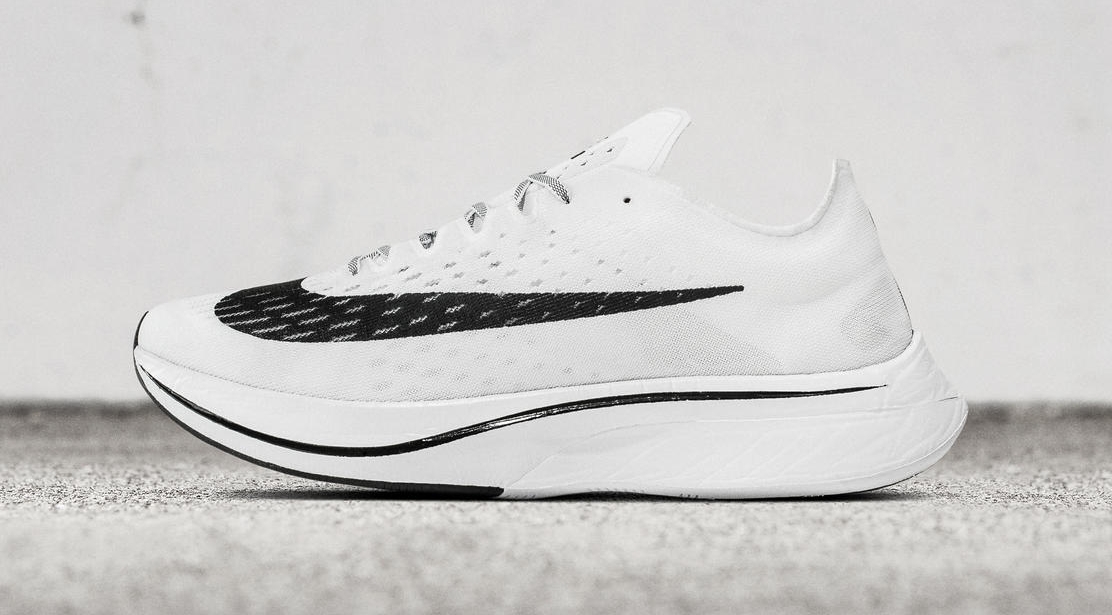
When Nike first unveiled ZoomX, many were quick to call it the brand’s answer Boost, a celebrated sneaker cushioning found in Adidas products and developed by German chemical company BASF. The widely agreed upon gold standard for cushioning at the moment, Boost has been a huge tech for Adidas since its 2013 debut and a contributor to the brand’s growing momentum. How does ZoomX compare?
It’s difficult to debate the merits of these two cushionings using only the VaporFly 4% as evidence on ZoomX’s side. The problem is that shoe uses ZoomX in tandem with a carbon fiber plate, so the ride provided, while quick and bouncy enough, isn’t indicative of how ZoomX feels on its own. (While there were early worries that the plate could give runners wearing the shoes an unfair advantage, they are indeed race legal.) Nike will surely use ZoomX in plenty more sneakers to come, but the VaporFly 4% is the only model that currently uses it. The shoe does feel good, though, and the heel specifically sort of springs up and down when pushed on. One can put pressure on it and actually feel the plate inside bounce back to shape afterward. It doesn’t feel quite as firm as Boost, and certainly doesn’t feel like it’s aiming to mimic that cushioning. Especially in the presence of the plate, a piece that renders the 4% as pretty inflexible, sort of the opposite of Nike Free.
While this writer was eager to try the VaporFly 4% after months of running in the Zoom Fly, logging actual miles in the former was a letdown. After a few runs, it became clear that the shoe’s extremely lightweight upper loses some points in the support category after shaving off so many ounces and layers. For a runner who pronates as this one does, the Zoom Fly is the preferred model, with its slightly thicker padding and support on the upper. Running in the VaporFly 4% is a more demanding experience overall, and one gets the sense that more experienced runners will get more out of the sneaker. The feeling of the plate/foam combo working together is apparent enough while walking, and sort of makes the wearer feel like they’re falling forward in the VaporFly 4% and Zoom Fly, but I didn’t really feel them working unless I focused my stride more on the heel or sped up enough to make the plate really bounce and change shape. It almost feels like a chore to try and activate the VaporFly 4%’s full potential during a run.
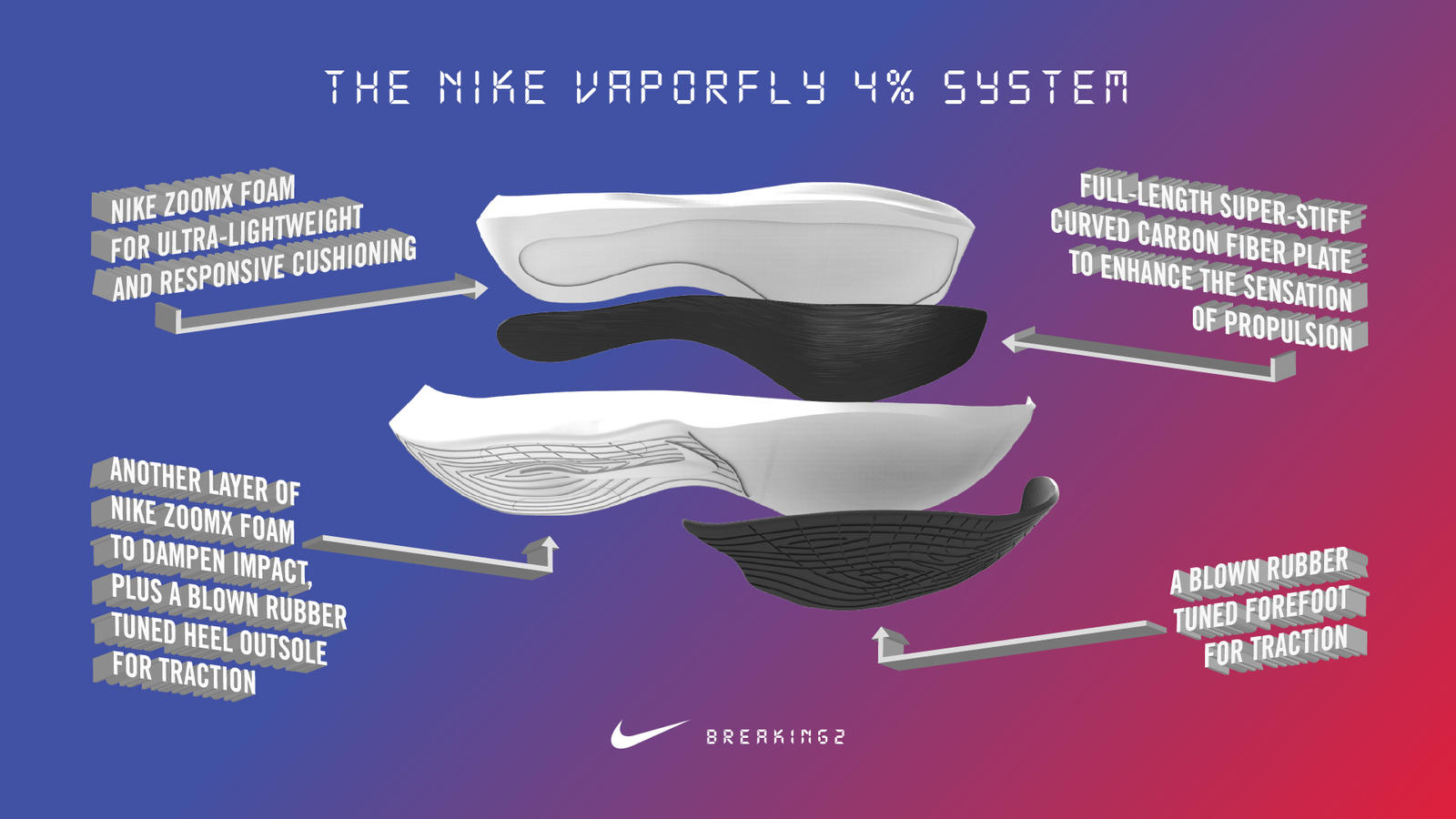
More experienced runners than this one have plenty of good things to say about the shoe. All the runners I’ve encountered in New York City who’ve tried a pair seem to love them, although many of those opinions come from Nike-affiliated athletes or those in the presence of Swoosh folk who gave them the sneakers. (Full disclosure: This writer got a free pair of these, the Pegasus 34, and the Zoom Fly.) Maybe the better evidence comes from the sneaker’s performance in legitimate races: Of the top six finishers across men and women at the 2017 Boston Marathon, five were Nike athletes wearing the VaporFly 4%. At the 2017 IAAF World Championships, the top three women finishers in the marathon all wore the sneakers, as did the men’s gold winner.
Aesthetically, ZoomX has a tough fight against Boost. While both of these platforms are about performance, sneaker brands have long relied on visual technology to help communicate innovation—buyers believe in tech they can see. Boost has a signature look that makes it more recognizable for the non-sneaker-nerd public. ZoomX is so far not wholly visually distinguishable from previous Nike foams, although the VaporFly 4% and the VaporFly Elite both have an elongated heel shape for aerodynamics that sets them apart and could serve as a visual marker of models using it in the future. There’s also the bulkier silhouette to help make them distinct, which could represent a new lane for running footwear aesthetics from Nike–the VaporMax kind of fits in this category as well. The sneakers did start off well in color, and the icy blue that introduced them is a stronger statement look than those provided by any Nike runner debut in recent memory. The only other visual detail setting ZoomX apart is the creasing on the midsole, which is there right out of the box. Of course, footwear enthusiasts are never happy about these sort of wrinkles, so it’s tough to imagine this as a positive.
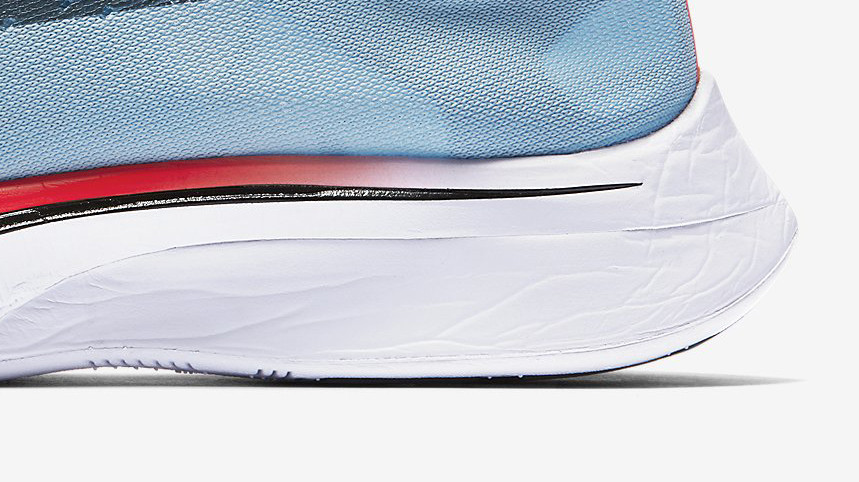
While ZoomX has a long way to go before it catches on with the mainstream, it’s hard not to consider the first model using it a success. The Zoom VaporFly 4% sold out upon its release, and is even being resold on the secondary market, which is rare for a sneaker oriented toward performance so much more than hype. (The Zoom Fly has an even bigger hit in this regard—the NikeLab SP version of that shoe immediately became a go-to cool-guy sneaker and resell fodder, and Virgil Abloh has a forthcoming collab version.) Even runners in New York City with Nike connections were worried about the scarcity of the shoes. Then again, the shoe doesn’t appear to have been mass produced, so it’s too early to call ZoomX a true commercial success.
Nike has been lacking in truly memorable sneaker moments over the past couple of years. As Adidas continues to grab market share, now is a critical time for Nike design. The “moonshot” Breaking2 race itself was a reminder of the sneaker giant’s ability to inspire passion through sport, push the limits of human endeavors, and expertly package an act that is monotonous at its core–Adidas still can’t do events like this. Watching the race unfold, even the lofty, galactic terms Nike put Breaking2 in felt more justified. But, in the opinion of this writer, the resulting footwear hasn’t been entirely successful. The Zoom Fly and the VaporFly 4% are both sharp sneakers that manage to translate capacious soles into something that feels fast visually, and they are refreshingly unlike other Nike runners out there. And while the VaporFly 4%’s ZoomX tech has its accolades already in the world of elite athletes, this runner had trouble feeling its buoyant qualities while running as much as while walking. If the world of competitive running and its associated footwear is a space race, as Nike has imagined, I am still not totally convinced of the fuel these rockets rely on.
